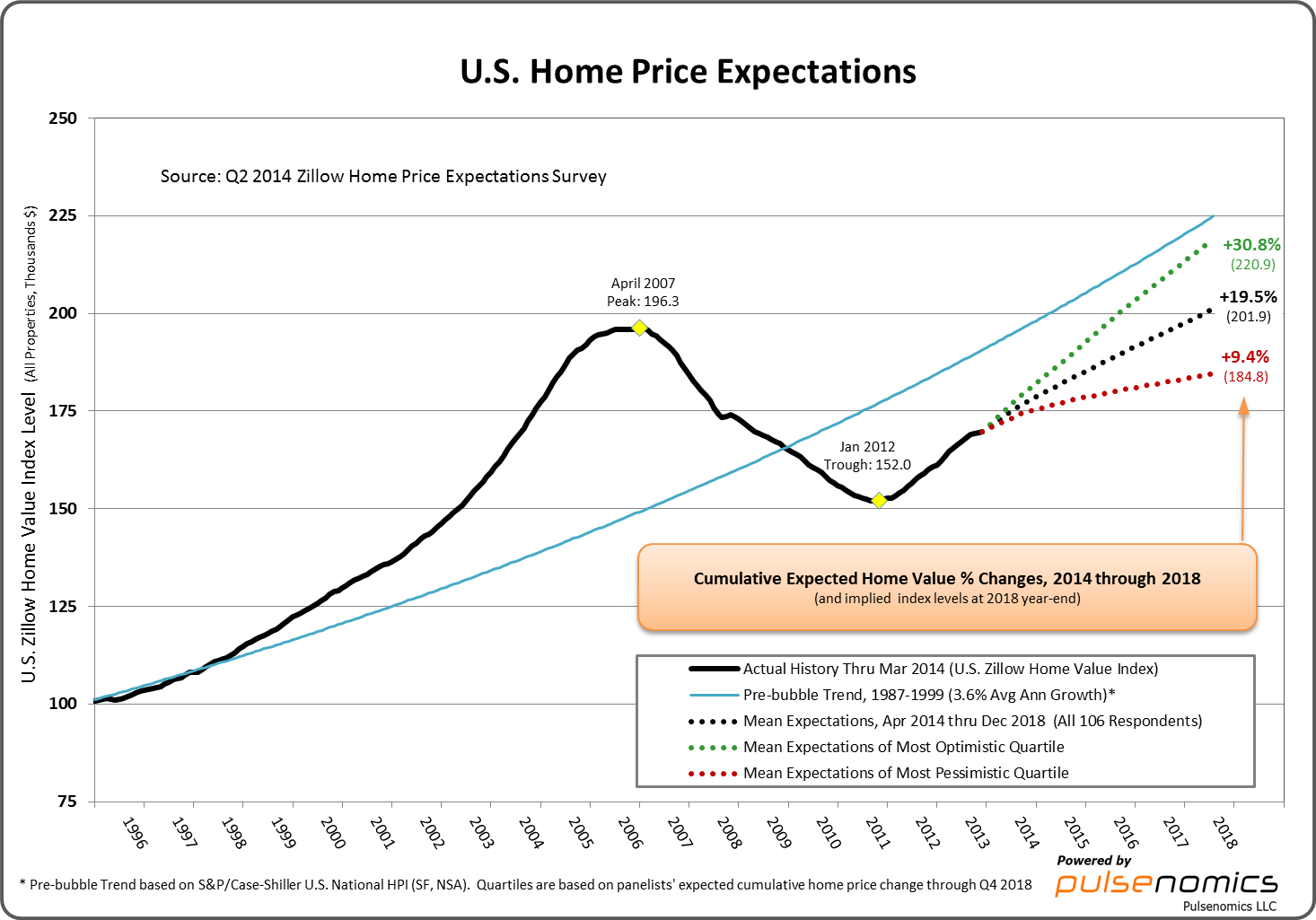In the latest Zillow Home Price Expectations Survey, released May 16th, over 100 housing experts predicted the path of home values through 2018. The panelists predicted home prices to grow, on average, 19.5 percent through December 2018, with the most optimistic quartile of panelists predicting 30.8 percent cumulative appreciation, and the most pessimistic quartile predicting 9.4 percent cumulative change in home values through the end of 2018.
The survey of 106 economists, real estate experts and investment and market strategists asked panelists to predict the path of the U.S. Zillow Home Value Index through 2018 and solicited opinions on the main cause of declining home affordability. The survey was sponsored by leading real estate information marketplace Zillow, Inc. and is conducted quarterly by Pulsenomics LLC.
On average, panelists said they expect nationwide home value appreciation of 4.4 percent through the end of this year, to a Zillow Home Value Index of $176,380 in December, ten percent below the peak value of $196,300 in April 2007. Panelists said they expect home value appreciation to slow to 3.8 percent by the end of 2015, on average, and to 3.4 percent through 2016. During the pre-bubble years from 1987 to 1999, home values grew an average of 3.6 percent annually.
The most optimistic quartile of panelists predicted a 5.8 percent annual increase in home values this year, on average, while the most pessimistic quartile predicted an average increase of 3.2 percent. On average, panelists said they expected U.S. median home values to exceed their pre-recession peaks by Q1 2018. The most optimistic panelists predicted home values would rise roughly 12.6 percent above their 2007 peaks by the end of 2018, on average, while the most pessimistic said they expected home values to remain about 5.9 percent below 2007 peaks.
2014 Q2 Special Report: Declining Home Affordability in Large Real Estate Markets
While low mortgage rates are keeping homes within reach of consumers across most of the country, affordability is becoming an issue within a number of markets, including the largest California metro areas, according to a recent Zillow study.
Panelists were asked to identify the primary cause of declining affordability from a list of five choices. Responses that gained the largest support among those with an opinion were stagnant income growth (28 percent), abnormally high rates of home price and rent appreciation (27 percent) and an abnormally low supply of homes currently available for sale or rent (21 percent). Many also pointed to a generally insufficient number of homes (13 percent) and tight credit (11 percent).

